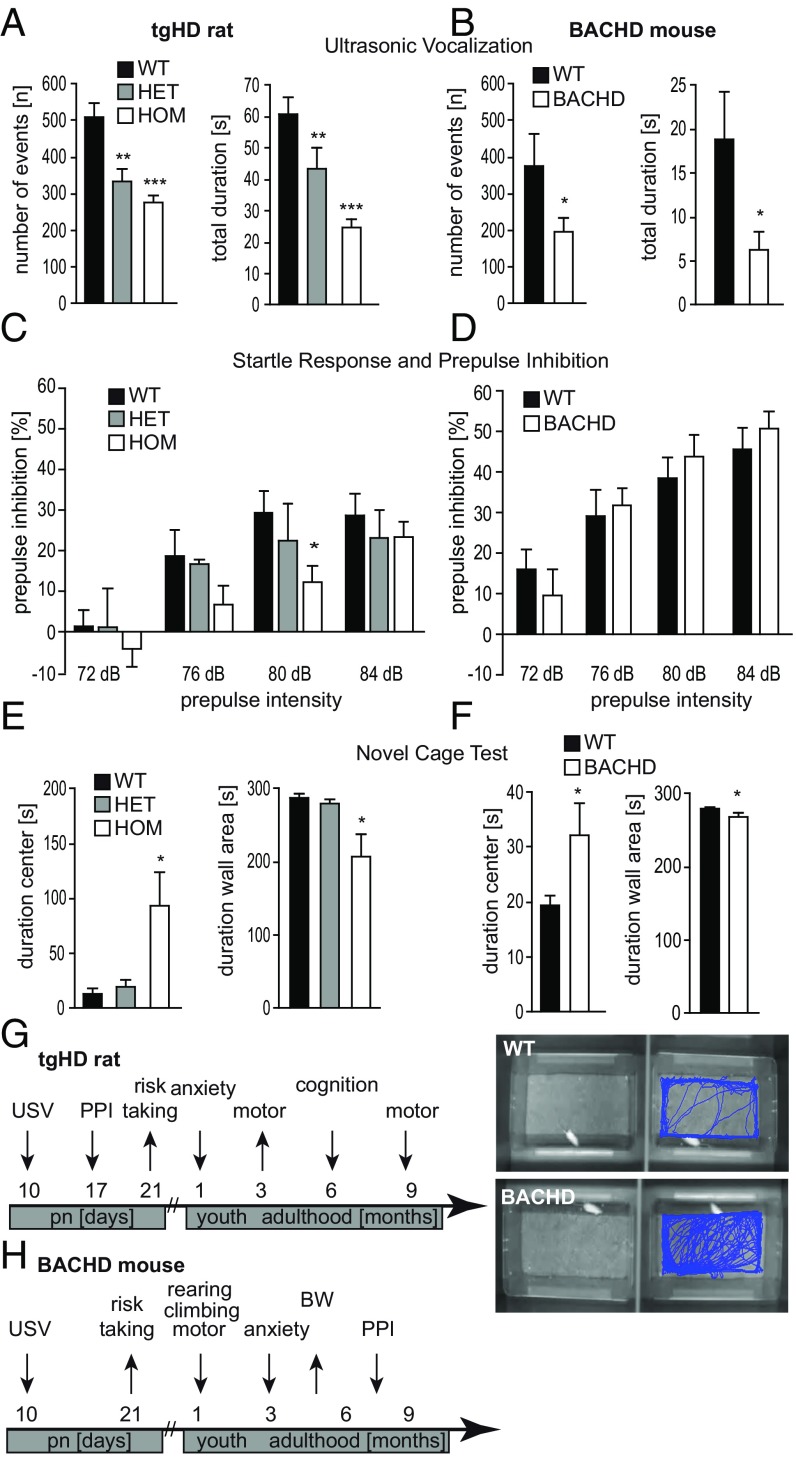Fig. 1.
Early behavioral phenotyping in transgenic models of Huntington disease. Rat (SPRDtgHD) and mouse (BACHD) pups were screened for a behavioral phenotype between P10 and P21. (A and B) The number and total duration of ultrasonic calls in WT, hemizygous (HET), and homozygous (HOM) rat pups (n > 30) (A) and WT and hemizygous (BACHD) mouse pups (n > 7) (B) were determined at P10. Transgenic pups emitted significantly fewer calls of shorter duration. (C and D) Startle response and PPI were measured at P17. Transgenic HD rat pups showed a significant loss of PPI at a prepulse of 80 dB white noise (n > 8) (C), while no differences were observed in BACHD mice at this age (n = 10) (D). (E and F) Altered exploration and risk behavior were detected in transgenic preweaning rats (E) as well as in transgenic mice at P21 (F) using the NCT. The time spent in the center of the cage was significantly increased in tgHD homozygous rat pups (n = 5) (E) and BACHD mouse pups (n = 8) (F), while the time spent in the wall area was significantly decreased. (G and H) A time-course graph illustrates the development of the behavioral phenotype of the transgenic tgHD rats (G) and BACHD mice (H). Data represent means ± SEM. Statistical analyses using ANOVA: *P < 0.05, **P < 0.01, and ***P < 0.001 vs. WT pups.

